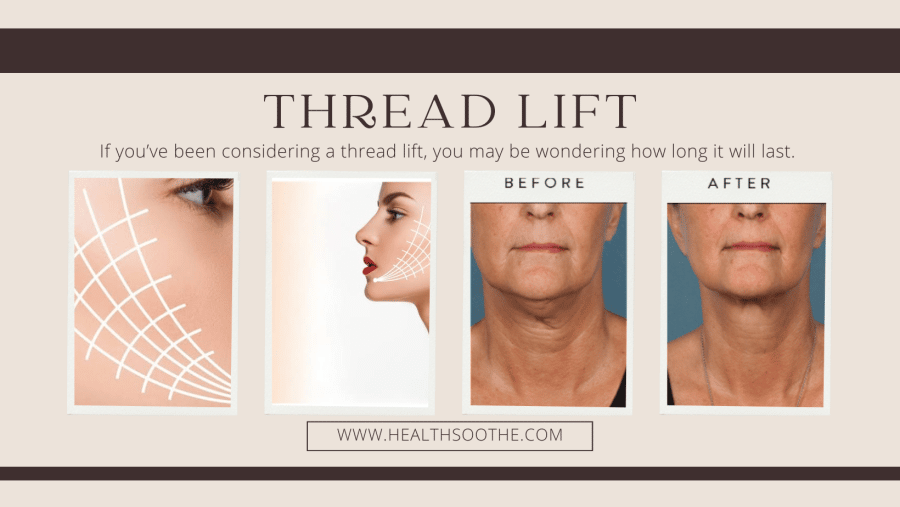If you’ve been considering a thread lift, you may be wondering how long it will last. Thread lifts are a non-invasive cosmetic procedure that can help reduce wrinkles and sagging skin. As with any cosmetic procedure, there are certain factors that can affect how long the results last. Let’s take a look at what those factors are and how long a thread lift typically lasts.
How It Works
A thread lift is a minimally invasive cosmetic procedure that uses special threads to lift the skin on your face and neck. The threads are made of biocompatible materials like PDO (polydioxanone) or PLLA (poly-L-lactic acid), which dissolve over time.
During the procedure, your doctor will use a thin needle to insert the threads into strategic locations on your face or neck. Once inserted, the doctor will pull on the threads in order to lift and tighten areas where sagging has occurred due to aging or other factors. The process can be completed in about an hour, with minimal downtime afterward.
Benefits of Thread Lifts
One of the main benefits of thread lifts is that they do not require surgery or general anesthesia. This makes them much safer than traditional facelifts while still providing impressive results. Thread lifts are also good for people who have just started showing signs of aging but don’t yet need a full facelift; they provide subtle but noticeable changes without having to undergo major surgery or extended recovery time.
Additionally, some studies suggest that thread lifts may also stimulate collagen production in the skin, making them an even more effective long-term solution for reducing wrinkles and improving skin elasticity.
What Affects the Durability of a Thread Lift?
The durability of a thread lift is affected by many things, including the type of threads used, the skill of your doctor or aesthetician performing the procedure, and your age and lifestyle habits. Your lifestyle plays an especially important role in determining how long your thread lift will last. Smoking, excessive sun exposure, and not getting enough sleep all to contribute to premature aging and can cause your skin to sag more quickly than it would otherwise.
The type of threads used during your thread lift also affects the duration of its effects. For example, PDO (polydioxanone) threads dissolve over time while PCL (polycaprolactone) threads remain in place longer but do not provide as much support for sagging skin. The ideal choice for you depends on your specific needs and goals; discuss these options with your doctor before making a decision so that you know which one is right for you.
How Long Does a Thread Lift Last?
The length of time that a thread lift lasts varies from person to person but generally speaking, most people experience results for up to two years or more. However, this timeline can be extended if you practice good skincare habits such as avoiding excessive sun exposure and wearing sunscreen when outdoors, staying hydrated by drinking plenty of water throughout the day, and consistently using anti-aging products like moisturizers and serums on your face to keep its condition optimal.
Thread lifts provide an effective way to reduce wrinkles and sagging skin without undergoing surgery or downtime. While there is no definitive answer as to how long a thread lift lasts since it depends on various factors such as age and lifestyle habits, most people experience results lasting up to two years or more with proper care following their procedure. It’s important to consult with an experienced professional before deciding whether or not this treatment is right for you so that you have realistic expectations about its effects on your appearance.

